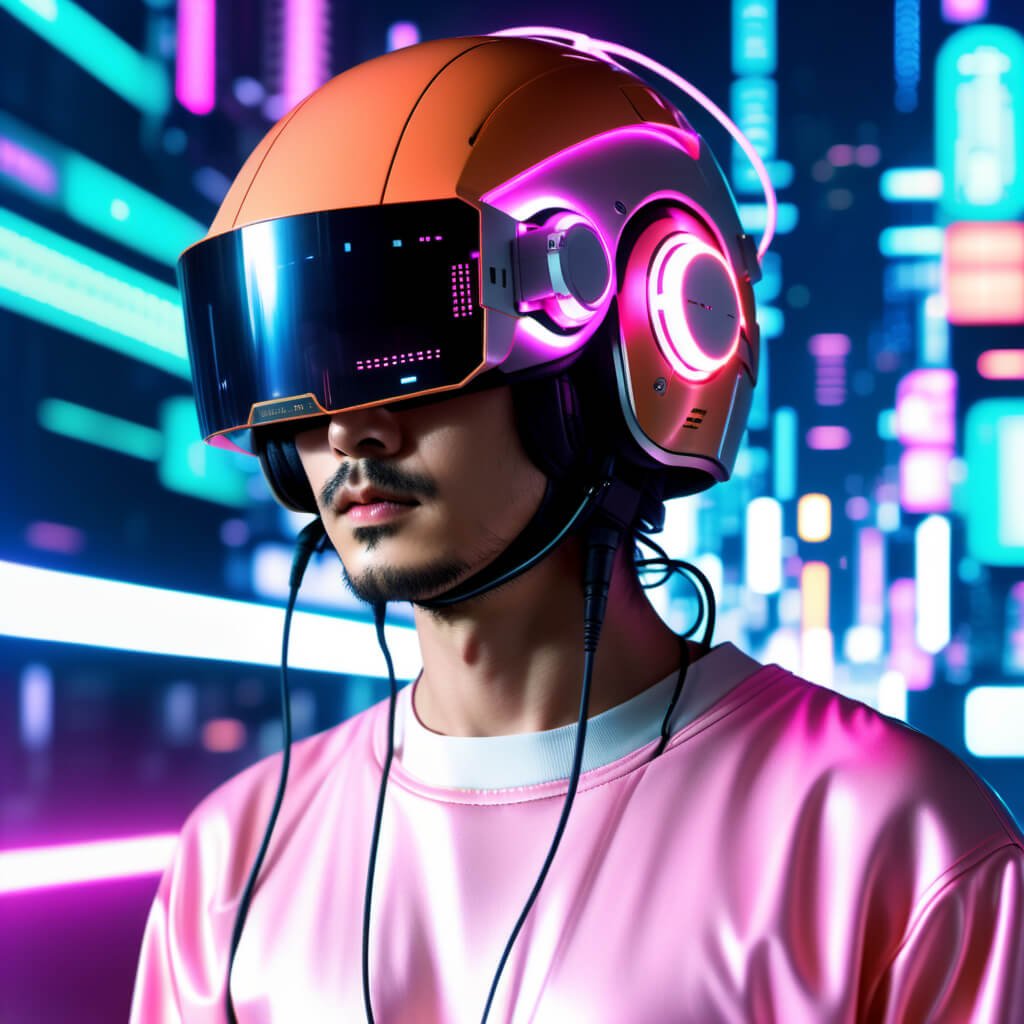DeepSouth Neuromorphic Supercomputer: Brain-Like System to Transform Business
DeepSouth Neuromorphic Supercomputer: Brain-Like System to Transform Business
This New "Brain-Like" Supercomputer Could Radically Transform Business
A pioneering new system called DeepSouth promises to bring brain-inspired computing into business applications, enabling unprecedented efficiency gains. Developed by Western Sydney University (WSU) scientists, DeepSouth is the world's first supercomputer specifically designed to emulate the parallel networks of the human brain.
Using bespoke neuromorphic hardware and software that mimics biological neural systems, DeepSouth achieves brain-like processing by recreating neurons and synapses in silicon. This specialized architecture allows the system to carry out a staggering 228 trillion synaptic operations per second - on par with estimates for the human brain itself.
Yet DeepSouth requires far less space and power than conventional supercomputers of similar performance. By distributing workloads across massively parallel neuromorphic chips inspired by biology, it avoids the processing bottlenecks of traditional von Neumann computer designs.
Tasks involving pattern recognition, anomaly detection, recommendations, and other areas could potentially execute with 10x to over 1000x better energy efficiency on DeepSouth. This enables breakthroughs in fields from neuroscience to autonomous driving while saving enterprises substantially on data center costs.
Meanwhile, the system's flexible FPGA-based hardware architecture allows it to be reconfigured to test different neural network configurations - accelerating innovation. Scaling up DeepSouth's capacity further is also readily achievable due to the high efficiency of its neuromorphic design.
The culmination of years of research, DeepSouth signifies the dawn of brain-inspired computing - with sweeping implications for business optimization across industries involving large-scale data processing or AI workloads. Unlocking even a fraction of the human brain’s astonishing parallel computing prowess could drive the next computing revolution.
Neuromorphic Dynamics
DeepSouth Neuromorphic Supercomputer
Supercomputers today typically rely on von Neumann architecture - separate processing and memory units that move data back and forth. But our brains compute differently - running massively parallel networks that process data efficiently. Now, a new neuromorphic supercomputer called DeepSouth promises to bring brain-inspired computing into business applications, enabling unprecedented efficiency gains.
Journey into the Quantum Core
A Computer That Works Like a Brain
With DeepSouth, Western Sydney University (WSU) scientists have created the first supercomputer designed specifically to emulate the neural networks of the human brain itself.
Using bespoke neuromorphic hardware and software that mimics biological systems, DeepSouth achieves brain-like parallel processing by virtually recreating neurons and synapses in silicon.
The system can perform a staggering 228 trillion synaptic operations per second - on par with recent estimates for the human brain. Yet it requires far less space and power than conventional supercomputers with similar performance.
"Progress in our understanding of how brains compute using neurons is hampered by our inability to simulate brain-like networks at scale," said Professor André van Schaik, Director of WSU's International Centre for Neuromorphic Systems (ICNS) that is developing DeepSouth. "Our system will change that."
So how could enterprises benefit from DeepSouth's unprecedented simulations of neural systems?
DeepSouth Supercomputer Vision 2024
Unlocking Efficiencies for Business
While DeepSouth promises to revolutionize neuroscience research, its brain-inspired approach could also transform business computing - with anywhere from 10x to over 1,000x better efficiency compared to traditional systems for some workloads.
"Practically this will lead to advances in smart devices...and less power-hungry and smarter AI applications," explains van Schaik.
By mimicking the parallel distributed processing of brains, neuromorphic systems can save significantly on data movement and power - while avoiding the memory bottlenecks of von Neumann designs.
Workloads like pattern recognition in computer vision, anomaly detection for cybersecurity, and personalized recommendations could see up to 100-1000x better efficiency executing on DeepSouth's specialized neuromorphic hardware. This frees up more processing capability for the same space, power and hardware cost - saving enterprises big on data center bills.
Meanwhile, software and services leveraging DeepSouth's massive neural simulations will enable breakthroughs in fields from neuroprosthetics and pharmaceuticals to autonomous vehicles and search algorithms - creating new business opportunities.
Neural Dreamwave 2088
Custom Built for the Brain
Unlike other top supercomputers, DeepSouth is purpose-built from the ground up to emulate neural systems, instead of just maximizing conventional performance benchmarks.
The system uses bleeding-edge neuromorphic chips that recreate the behavior of brain components like neurons and synapses in an energy-efficient way - enabling brain-scale simulations.
Meanwhile, the use of FPGAs (field programmable gate arrays) allows flexibility to reconfigure DeepSouth's hardware to test different neuron models and structures quickly.
"If you are trying to understand the brain this will be the hardware to do it on," says Johns Hopkins computer engineering professor Ralph Etienne-Cummings.
While most neuromorphic research systems rely on customized chips that are costly to produce, DeepSouth utilizes commercially available hardware from vendors like Intel and Dell for continual improvements.
This could allow affordable replication of smaller versions tuned to the specialized workloads of enterprises.
Do Androids Dream of Electroid Relief?
Scaling Up Brain-Based Processing
DeepSouth's design is also readily scalable. After the planned April 2024 switch on of its initial configuration, additional capacity can be added modularly as needed.
Doubling DeepSouth's neural simulation capability would require only fractionally more space and power thanks to efficiency gains from its neuromorphic architecture.
More broadly, the breakthroughs from this Australian project could accelerate broader applications of neuromorphic computing internationally - with ripple effects across the technology landscape.
"Our brains compute the equivalent of a billion billion operations per second with just 20 Watts," explains Professor van Schaik. "DeepSouth achieves similar fast parallel processing efficiency - using less power and space than conventional supercomputers."
This energy savings could be a game changer for compute-intensive fields from genomics analytics to autonomous transport and smart cities.
Meanwhile, the ability to trial brain-inspired architectures and algorithms virtually on systems like DeepSouth may speed up neuromorphic hardware development.
Neuromorphic Hardware Science
The Brains Behind DeepSouth
The audacious DeepSouth project builds on years of neuromorphic computing research by Professor van Schaik's team at the ICNS in Western Sydney.
But realizing such an ambitious goal at the cutting edge has required global collaboration. Researchers from institutions across Australia and Germany have combined forces on designing, building and soon operating DeepSouth.
Key partners include the University of Sydney, University of Melbourne, and Germany's University of Aachen. While support has come from Microsoft, Australia's science agency CSIRO, and the NSW Government.
This synergy of public and private cooperation from both tech leaders and research pioneers enables big bets on transformational technologies.
Exascales of Economy
Kickstarting an Innovation Pipeline
The ripples from DeepSouth will extend far - seeding follow-on advances across industries and academia.
"We expect many commercial technologies to emerge from this project," said Professor van Schik.
The system's design means it provides remote access via the cloud. Researchers across Australia and worldwide will be able collaborate on virtual experiments using DeepSouth's unprecedented neural simulation capabilities.
Findings can then inform the development of revolutionary real-world applications - from brain-controlled prosthetics to autonomous drone swarms capable of navigating environments as nimbly as birds.
So while DeepSouth's 2024 switch on already seems impossibly close, in many ways the era of brain-like computing it inaugurates has only just begun. The full implications may take decades to unfurl across business and society - making this project a pivotal point in technological history.
One thing's for sure - leveraging these biological principles will enable enterprises to radically amplify the efficiency of data-intensive workloads. The economic incentives alone could drive rapid adoption of neuromorphic computing, reigniting Moore's Law.
So expect to hear much more about DeepSouth and systems inspired by its neural architecture as their transformative business potential is unleashed. Because if there's one thing biology has mastered, it's advanced parallel computing.
Supercomputing into the Singularity
DeepSouth: A Sneak Peek at the Supercomputers of Tomorrow
With its brain-inspired neuromorphic architecture, DeepSouth offers a glimpse into the future of supercomputing - one that promises unprecedented scalability while consumiong just a fraction of the energy of today's systems.
While still in development for its 2024 launch, DeepSouth's specialized hardware could enable enterprises to achieve the equivalent of exascale supercomputing performance - 10^18 operations per second - within modest data center footprints.
Data Driven Futures
The Vital Role of Supercomputers
The importance of such capabilities cannot be overstated when it comes to tackling both business challenges and humanity's most pressing issues.
From designing life-saving drugs to predicting dangerous weather events, supercomputers empower discoveries that would otherwise be impossible.
The world's current fastest supercomputer - Japan's Fugaku - is over 3 times more powerful than its predecessor just 5 years ago. Experts forecast 400x growth in HPC capabilities between 2010 and 2040.
This exponential increase enables once unfathomable scientific and technical feats - but also consumes colossal energy, with associated sustainability impacts.
Top supercomputers today eat up 10-20+ megawatts, enough to power a small town. The fastest projected for 2024, Frontier, may draw up to 60 megawatts.
The Future is Quantum, Unlock Your Advantage
Ushering in the Quantum Computing Era
Quantum computers of the future promise further revolutionary leaps in performance - by harnessing exotic phenomena like entanglement and superposition.
Google and rivals are racing to build systems with over 1 million "qubits" - the quantum equivalent of classical computing bits - by 2030. Achieving practical large-scale quantum computing could transform everything from AI to finance.
But quantum systems require delicate handling, with qubits prone to quantum "decoherence" unless kept near absolute zero (-459°F). The cooling systems alone can consume multiple megawatts of power per advanced qubit chip.
This makes scaling quantum computing arduous and costly without drastic energy efficiency breakthroughs.
Geomantic Superintelligence
DeepSouth's Scalable Neuromorphic Approach
Here DeepSouth may provide vital clues. While not quantum, its brain-like design delivers exponential gains in parallel processing performance and efficiency vs classical supercomputers.
The system's neuromorphic hardware architecture distributes workloads across a mesh of customized processing "nodes" - each with 1 million artificial neuron circuits operating in parallel, much like the brain's neurons activate concurrently to process information.
This avoids the data transfer bottlenecks of passing every operation through a central processing unit. The result is ultra-efficient neuromorphic chips utilizing just milliwatts of power while carrying out workloads like classification orders of magnitude faster.
The CSCRI team notes that doubling DeepSouth's neural simulation capability would require only fractionally more space and power owing to its high computational density. By comparison, doubling a traditional supercomputer's performance could require up to 10x more energy.
Adventures into Exascale
Gaining Insights Into Future Computing
Thus, while advancing neuroscience research itself, DeepSouth also serves as a test bed for extremely scalable supercomputing architectures utilizing the latest in heterogeneous computing hardware.
The system's flexible FPGA backbone allows not just neural simulations, but exploring hybrid designs that integrate cutting-edge capabilities like optics, photonics, and future qubit accelerators - at scale.
This could enable computer engineers to overcome hurdles in controlling quantum decoherence effects while orchestrating millions or billions of qubits to operate in perfect synchrony.
Having flexible yet realistic HPC simulation platforms that integrate classical, neuromorphic, and eventually quantum resources seamlessly will be crucial to unlocking this future.
It also promises to maximize returns on computational investments for both public-good research and commercial technology development.
Data Driven Terror Dynamics
Fulfilling Public & Environmental Goals
Importantly, brain-inspired computing could help fulfill wider public policy priorities around technology for societal benefit.
The US CHIPS Act allocates $11 billion for HPC and AI research at the Department of Energy alone, while the EU plans to invest €8 billion in next-gen supercomputing over 2021-27 - aiming to develop the world's first exascale machines.
Yet there are growing calls internationally to balance expanding HPC capacity with improving its energy efficiency and accessibility.
Top scientists have warned that without urgent improvements, skyrocketing supercomputer energy use will hamper technological progress by mid-century.
Meanwhile, studies show giving varied groups access to advanced computing resources accelerates innovation across disciplines.
DeepSouth points to one avenue where continued R&D into bio-inspired architectures could deliver huge leaps on both counts.
Quantum Hypercube Simulations
The Quest to Unlock Synaptic Supercomputing
Ultimately, if engineers can translate even fractions of our 100 billion neuron brains' astonishing efficiency into silicon form factors, it would completely reshape high performance computing - and all that it enables.
From climate modeling to precision medicine to AI breakthroughs, specialized neuromorphic systems promise to democratize access to once unimaginable levels of computing power in affordable and sustainable packages.
With DeepSouth now on the brink of realization, the prospect of unlocking this synaptic supercomputing future is closer than ever before. Both business and science stand to reap exponential rewards from this new interdisciplinary frontier - if they have the vision to nurture its development.
Because while progress seen already seems astonishing, we likely haven't come close yet to discovering biology's best computer engineering lessons. As DeepSouth's Principal Engineer, Shayan Garani, puts it:
“We designed DeepSouth specifically to continue teaching us more about the brain’s genius for processing power. Because nature’s best computing breakthroughs still lie ahead of us.”
Seize the Moment! Upskill into Six Figures
Are you ready to learn about the next revolution in artificial intelligence? DeepSouth AI is pushing computing to new frontiers with their groundbreaking neuromorphic technology. Their spike-based neural networks and specialized hardware mimic the human brain for unprecedented speed, efficiency and capability.
This pioneering company is on the cusp of truly transforming AI. Their innovations show immense potential across industries if successfully developed and scaled. Get an exclusive first look at DeepSouth AI's progress and plans in our new article "DeepSouth AI: Pioneering the Neuromorphic Computing Revolution."
Dive deep into their spike timing dependent plasticity algorithms, ANN conversion techniques, and multi-tiered neuromorphic architecture. Find out how it could push past current limits to enable capabilities beyond our imagination. Discover the immense impacts anticipated in sectors like healthcare, robotics, manufacturing and more.









































































